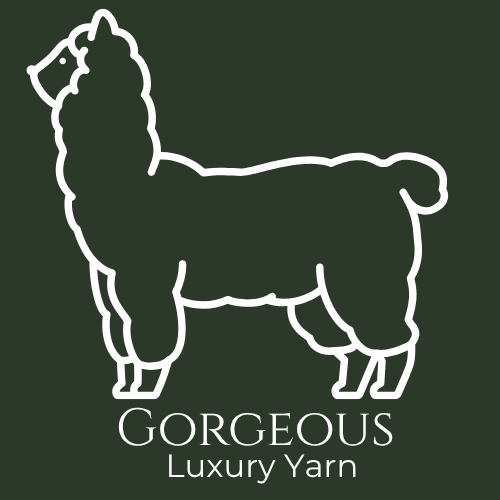
How to Match Colours Like a Pro: A Crafter’s Guide to Beautiful Combinations
Share
Whether you’re knitting your next cosy jumper or planning a crochet blanket, choosing colours that work together can make the difference between nice and wow!
If colour theory sounds intimidating, don’t worry — once you understand a few simple rules, matching shades becomes second nature.
Let’s explore your secret weapon — the colour wheel — and discover timeless principles to help you pick combinations that make your handmade pieces shine.
🎨 Step 1: Meet the Colour Wheel
Think of the colour wheel as your creative compass. It’s a simple circle that shows how colours relate to one another.
Think of the colour wheel as your creative compass — a simple, powerful tool that helps you understand how colours relate to one another.
- Primary colours: Red, yellow, and blue — the building blocks of all other colours.
- Secondary colours: Green, orange, and purple — made by mixing the primaries.
- Tertiary colours: The blends in between (like blue-green or red-violet).

You can see how shades sit opposite or next to each other — and that’s where the magic begins.
💛 Step 2: Try These Foolproof Colour Matches
Here are six reliable ways to combine colours beautifully — from soft tonal blends to vibrant contrasts. These classic combinations will never fail you, no matter your project:
1. Complementary Colours
These sit opposite each other on the wheel — like blue and orange, or red and green.
They create strong contrast and make each other pop. Perfect for bold stripes, Fair Isle details, or eye-catching trims.

2. Analogous Colours
These are neighbours on the wheel — like teal, turquoise, and blue.
They blend harmoniously for a calm, unified look. Try them for gradient scarves or soft-toned shawls.

3. Monochromatic Colours
One colour, different shades — such as mauve pinks. This creates depth and texture without overwhelming the eye. It’s ideal for colourwork that feels elegant and cohesive.

4. Triadic Colours
Evenly spaced on the wheel — like purple, green, and orange.
Triads are cheerful and balanced. They’re great if you love playful palettes for baby knits or home accessories.

5. Tetradic
Tetradic simply means ‘group of four.’ It matches two complementary pairs to create rich, balanced colour stories. Choose one dominant colour and use the others as accents.


6. Colour Wheel: Split-complementary
A split-complementary is a colour combination that uses a base colour and two adjacent colours on either side of its complementary colour on the colour wheel

But what about white, and black, and grey.....?!
Neutral colours, which include White, Black, Brown and Grey are not included on the colour wheel because they are not actually considered 'colours', and are known as non-colours'. The neutrals are compatible with almost all of the colour wheel's combinations, so are a great base or versatile option for your designs.

🧶 Step 3: Balance Warm and Cool Tones
Every colour leans either warm (reds, oranges, yellows) or cool (blues, greens, purples). Warm tones bring energy and comfort — perfect for winter knits or rustic projects. Cool tones are calming and refreshing — ideal for airy summer shawls or delicate crochet work.
For balance, pair one warm and one cool tone, or add a neutral (cream, grey, taupe) to tie everything together.

For balance, pair one warm and one cool tone, or add a neutral (like cream, grey, or taupe) to tie everything together.
Let's look at balancing some warm and cool yarns together with neutrals...

🌾 Step 4: Use Nature as Inspiration
If you’re ever unsure, look outside — nature never gets colour wrong. From heathered hillsides to mossy greens and soft sky blues, the natural world is full of effortless inspiration.

Many of our alpaca yarns are rooted in these soothing, organic palettes, blending together beautifully in any combination.
🧵 Step 5: Test Before You Commit
Before starting a large project, knit or crochet a small swatch with your chosen colours side by side.
You’ll instantly see how they interact — sometimes a colour that looks perfect on its own may appear dull or harsh next to another.
Trust your eye, and go with what feels right. We’re always happy to send yarn samples if you’d like to test a palette together.
👉 Take a look at all our yarns
💡 Quick Tip: When in Doubt, Add a Neutral
Neutrals like cream, beige, charcoal, or natural alpaca brown can soften vibrant hues or bring sophistication to pastels. They give the eye a place to rest and make your chosen colours stand out beautifully.
✨ Final Thoughts
Matching colours isn’t about following strict rules — it’s about creating harmony that feels right to you.
The more you play with combinations, the more confident you’ll become.
So spread out your yarns, experiment fearlessly, and enjoy the discovery. You might be surprised by how perfectly your next palette comes together.
Ready to explore? Discover our naturally dyed and undyed yarns — from soft greys and creams to rich berry tones — all designed to mix, match, and inspire.Did you know? The colour wheel was invented by Sir Isaac Newton in 1666, while studying how light splits into a spectrum of colours — a discovery that still guides artists and crafters today.
FUN FACT: Did you know? The colour wheel was invented by Sir Isaac Newton in 1666, while studying how light splits into a spectrum of colours — a discovery that still guides artists and crafters today.

